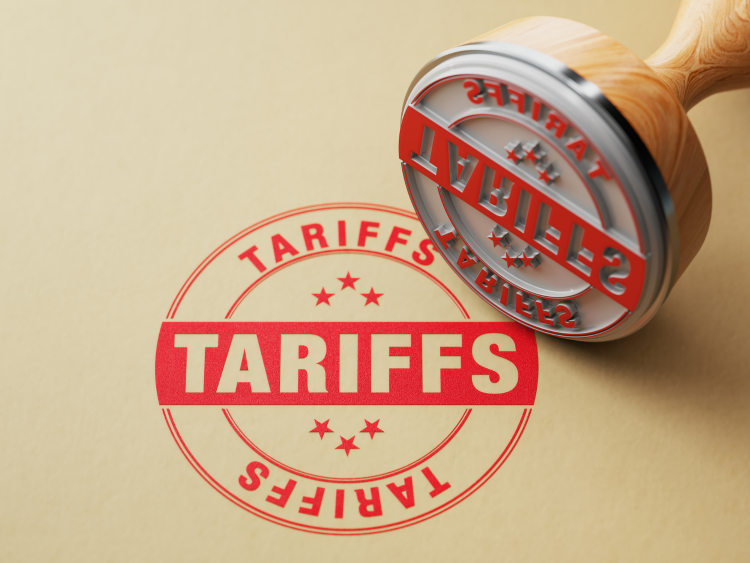Steel Products

Infrastructure Bill Passes House, Steel Cheers - Awaits Biden's Signature
Written by Michael Cowden
November 8, 2021
Steel industry lobbying groups and trade unions cheered passage of the bipartisan House $1 trillion infrastructure bill – which experts estimate could result in millions of tons of new steel demand.
The legislation devotes approximately $850 billion to steel-intensive infrastructure, according to estimates from the American Iron and Steel Institute (AISI).
![]() The House vote, which occurred late on Friday, comes after the Senate approved an infrastructure spending plan in August. The bill will become law once President Biden signs it.
The House vote, which occurred late on Friday, comes after the Senate approved an infrastructure spending plan in August. The bill will become law once President Biden signs it.
“Funding roads and bridges, ports and waterways, water infrastructure, the electric grid and investing in electric vehicle systems, all will require a lot of steel – and our industry is ready to provide that steel,” AISI President and CEO Kevin Dempsey said in a statement.
The money equates to as much as 40 million to 45 million tons of steel demand over the life of those projects, per AISI figures.
The Steel Manufacturers Association (SMA) also welcomed the bill.
“For too long we have treated infrastructure investment as some kind casual choice that could be deferred indefinitely. Passage of this bill means that now is the time to turn promises into projects,” SMA President Philip K. Bell said in a statement.
“We applaud the bill because it focuses on steel-intensive, traditional infrastructure,” Bell added. “We are also pleased with elements of the bill that emphasize sustainable steelmaking, green energy and domestic procurement preferences.”
SMA estimated that every $100 billion in infrastructure spending could result in increased steel demand of four million to six million tons.
The CRU Economics Team earlier this year predicted that infrastructure spending had the potential to increase U.S. steel demand by around 3% or 3 million tons per year for five years. CRU, SMU’s parent company, said that steel demand would be front-loaded because steel is often used early in construction projects.
CRU Principal Analyst Josh Spoores put the figure as high as 4 million tons. But he noted that much would depend on prices – higher prices could mean less total steel consumption.
Whatever the final figure, the euphoria over a deal being reached – after months of political infighting – was apparent in statements from the United Steelworkers (USW) union, the United Auto Workers (UAW) union, and from President Biden himself.
“Our elected leaders have long promised this kind of transformational infrastructure investment but ultimately failed to deliver,” USW President Tom Conway said. “Now, thanks to President Biden’s vision and leadership, Congress has finally come together and passed bipartisan legislation that will directly benefit American workers.”
UAW President Ray Curry sounded a similar note. “For UAW members, this legislation brings reliability and job opportunities by improving the current state of our roads, bridges, water, electric vehicle infrastructure, internet capacity and electrical grid reliability.”
Here are some highlights of the infrastructure bill, according to a White House fact sheet:
• $66 billion in spending on public transportation
• $17 billion for port infrastructure and $25 billion for airports
• $55 billion to get rid of lead water pipes
• $65 billion for the electric grid
• $7.5 billion for electric-vehicle (EV) charging stations
“I don’t think it’s an exaggeration to suggest that we took a monumental step forward as a nation,” President Biden said in a speech on Saturday. “We’re looking forward to having shovels in the ground to begin rebuilding America.”
By Michael Cowden, Michael@SteelMarketUpdate.com

Michael Cowden
Read more from Michael CowdenLatest in Steel Products

CRU: US stainless prices to rise on expanded S232 tariffs
Stainless prices in the US market will rise, following price increases by major US producers. Our base case scenario incorporates higher US prices in the near term, despite the initial negative reaction by the market. US stainless prices will go up in 2025 H2 and will stay elevated in 2026 as tariffs on stainless […]

Galvanized steel demand unsteady amid lingering buyer fatigue: HARDI
Uneven demand for galvanized steel in June reflects a market that remains mired in uncertainty, according to industry sources.

OCTG industry salutes Customs for catching trade crooks
The US OCTG Manufacturers Association is commending US Customs for intercepting another Thai company's attempt to illegally transship Chinese oil pipe to the US.

Whirlpool says tariffs will bolster business
“Economically, the business case for products made in the us has become a lot more attractive," the CEO told Fox Business.

Worthington Enterprises buys Elgen Manufacturing
Worthington Enterprises acquires HVAC products maker Elgen Manufacturing.
